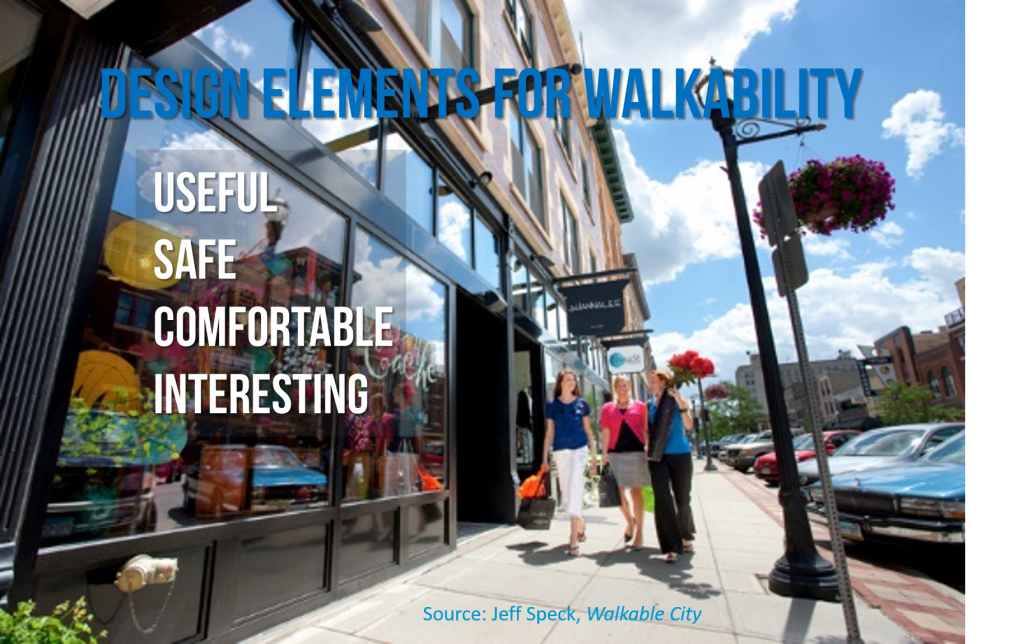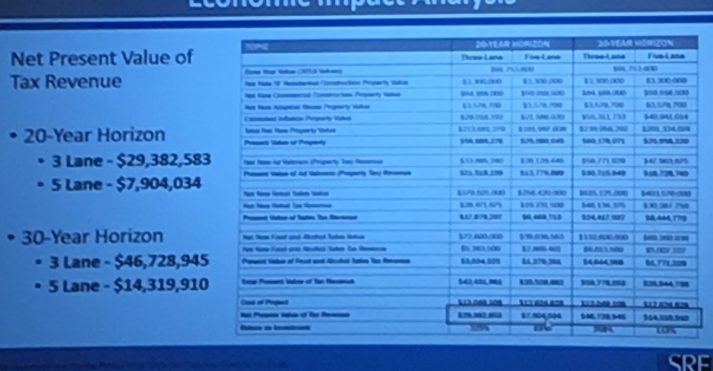
There is a proven design formula for creating value along a street. There are common street design elements that attract pedestrians and get shoppers out of their cars and into stores. In fact, the City of Fargo has successfully implemented the formula along four blocks of Broadway which has resulted in $45 million in investment and more than a 100% increase in property values along the stretch.
The Department of Transportation will soon start designing the reconstruction of Main Avenue from University Dr. to the Red River and it will be reconstructed in 2019. A Public Input Meeting will be held on Tuesday, May 8 from 4 to 6 p.m. at Fargo City Hall.
Public input meetings for this important project were held in 2011 and attended by only 16 members of the public. Downtown has changed greatly in the last seven years and is poised to become even more vibrant and walkable. If the redesign of Main Avenue in downtown is focused on traffic volume, traffic efficiency, and traffic speed, it will severely limit the redevelopment potential, property values, retail sales, and civic pride for this important gateway. But what if the path forward takes into account the value of the potential tax revenue generated by each option?

According to the City’s economic analysis, $29M in taxes would be generated from a 3 lane Main Avenue in downtown on a 20-year horizon. A 5-lane would generate just $7M.
Kilbourne Group applauds the City of Fargo’s effort to study the economic impacts between the Main Avenue design alternatives. Parts of this stretch of Main currently support retail with on-street parking. The barrier of parked cars between traffic and people results in a safer, more walkable, more inviting environment for people.
More importantly, on-street parking is vital to the success of traditional main street storefronts. Bob Gibbs, author of Principles of Urban Planning and Development, says the lack of on-street parking would result in 50% or more reduction in retail sales. A design which does not include on street parking will necessitate suburban style development with front loaded parking lots which is not appropriate in a downtown setting and has been shown to generate far lower property values.
The design should focus on attracting people to shop and enjoy these blocks of Main Avenue by slowing the traffic. We advocate for the design to result in actual traffic speeds not exceeding 30 miles per hour. Slower speeds will create a safer and more inviting environment for pedestrians and help reconnect the areas of downtown currently split by Main Avenue. Wide sidewalks, on-street parking, boulevard trees, and active ground floor shops and businesses directly fronting along the sidewalks all help slow traffic.
Speeds in excess of 30 miles per hour create a condition where drivers cannot observe storefronts. This reduced visibility results in traditional main street storefronts are being viable.
“The perception that high speeds are detrimental to retail is nearly universal. Streets designed for moving traffic, by definition, reduce the “friction” (between cars and cars, cars and people, cars and bikes, bikes and people, etc.) and the vitality this “friction” brings to urban commercial streets.”
Source: Impact of Traffic Patterns on Corridor Retail
Street design has the power to generate or undermine higher property values, private investment, and greater return on investment for public entities.
Take the design of Broadway as an example. It has seen significant redevelop and private investment since it’s 2001 redesign. On-street parking, intersection bump-outs, street trees, paver stones and fewer lanes all serve to slow the cars and create walkability. More importantly, the redesign reintroduced the missing elements required for traditional main street storefronts: slower speeds and on-street parking. Those changes once again made retail viable along Broadway and resulted in significant private investment in renovation and infill, new businesses, vitality, and increased tax base that would not have occurred if the street design would have solely focused on traffic volumes and speeds.
READ: “Building for Cars or Building for People? 2 Streets Illustrate this Distinct Difference.”
Strong Towns Assessment of Main Avenue vs. Broadway in Downtown Fargo
In reconstructing Main Avenue we have two choices. We can ensure people in cars can move at high speeds and in greater numbers, or we can design a road for people who walk, people who bike, people who use transit, and people in cars. The later has been shown to not only generate civic pride, but when done correctly spurs private investment, a stronger tax base, increased number of businesses, and a positive return on investment.
From our perspective as a developer committed to downtown Fargo, we are attracted to areas we believe can support a vibrant 18-hour community. This happens through mixed use development: people living, working, shopping, and playing, all within walking distance. A high speed multi-lane highway eliminates this possibility. A street designed for people walking, biking, driving, and using transit will lead to more successful businesses along this corridor and more value for the City of Fargo.
Design Main Avenue between University and the Red River as a gateway into downtown Fargo that is safe and inviting for people both in cars, and out. Give the community something to be proud of; somewhere inviting and safe.